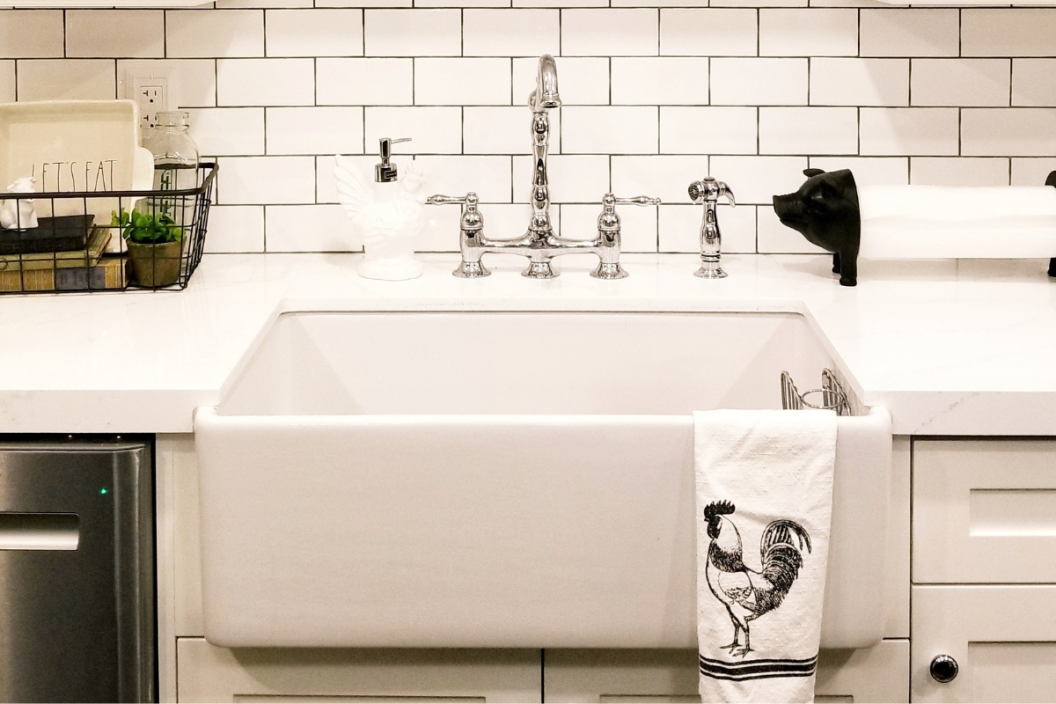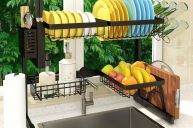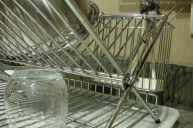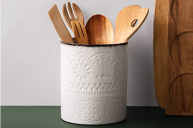When I bought my house last year, the previous homeowner was kind enough to do a walkthrough to answer any questions I had about the property. She had done a kitchen remodel a few years ago, and I admitted that the kitchen was the main reason I bought the house. "I know," she replied, "I'll be sad to leave this kitchen. I'm not sure I can ever live without farmhouse sinks again."
I wasn't sure that I agreed with her. While I liked the look of the large, stainless steel kitchen sink, I couldn't see what was so unforgettable about it. After a few short months, though, I knew her statement to be the truth.
What Are Apron-Front Farmhouse Sinks?
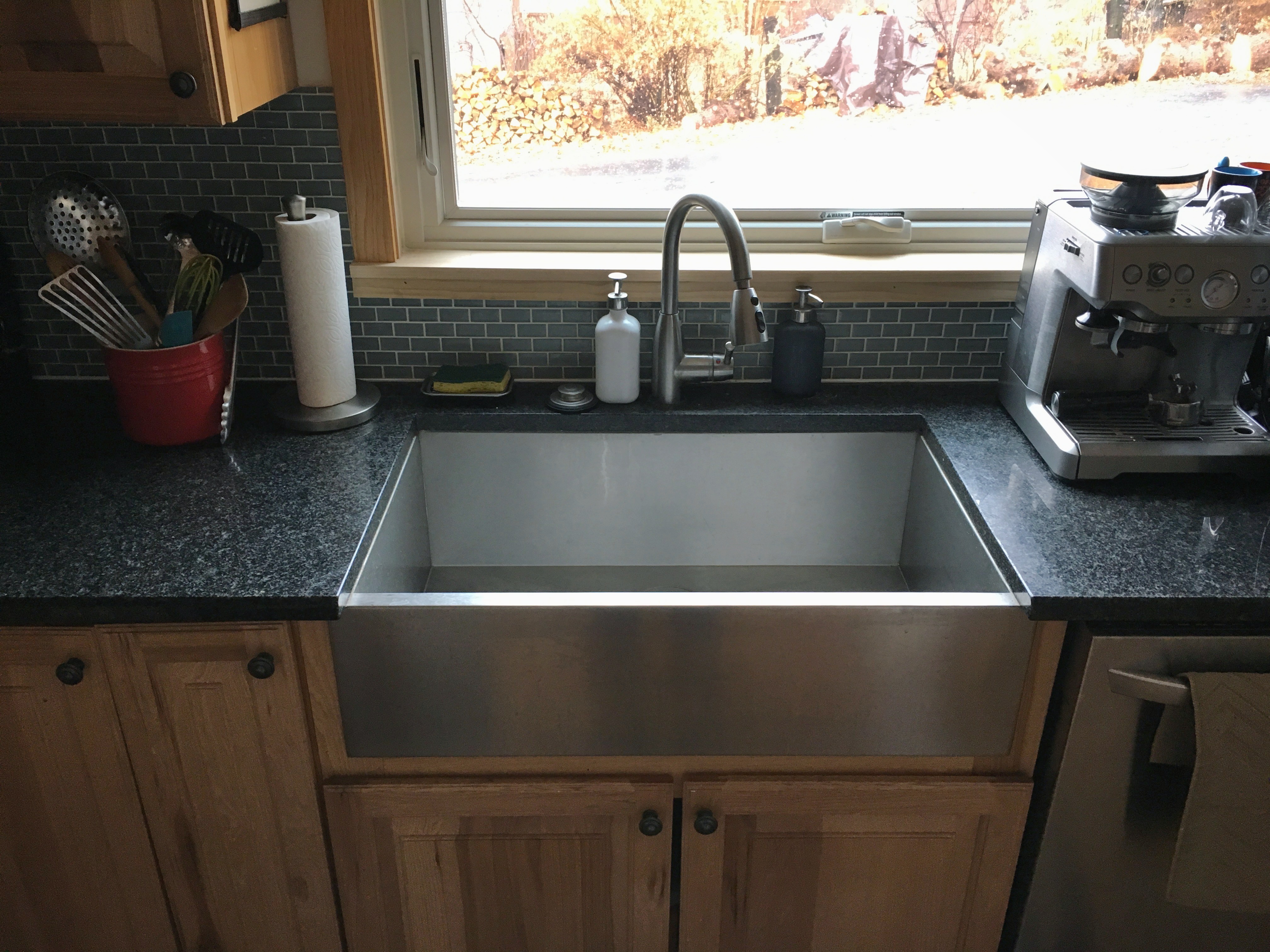
Lindsay Mattison
Farmhouse sinks have gained in popularity over the past few years thanks to stars like Chip and Joanna Gaines, and kitchen design Pinterest boards but really they're nothing new. These farmhouse-style sinks originated from Ireland and Great Britain in the 17th century, when running water was a commodity. The purpose of the large sink was to hold water fetched from nearby wells.
Today, most people aren't interested in saving every drop of water in the sink but their purpose has grown and expanded. Most of these large sinks don't have the traditional divide - they're a single basin sink. While you can purchase a double bowl sink, I like my single bowl sink because it really allows me to let the dishes pile up (yeah, I do that) and it makes it easier to wash large pots and pans.
Whether you go for the double bowl farmhouse sink or not, your farmhouse sink will be much deeper and wider than the traditional kitchen sink. This gives the farm sink a leg up from the traditional model. You can rinse and wash away without worrying about all that splashing. The size is what attracts people, and it's certainly what I love about mine.
How I Use My Farmhouse Kitchen Sink
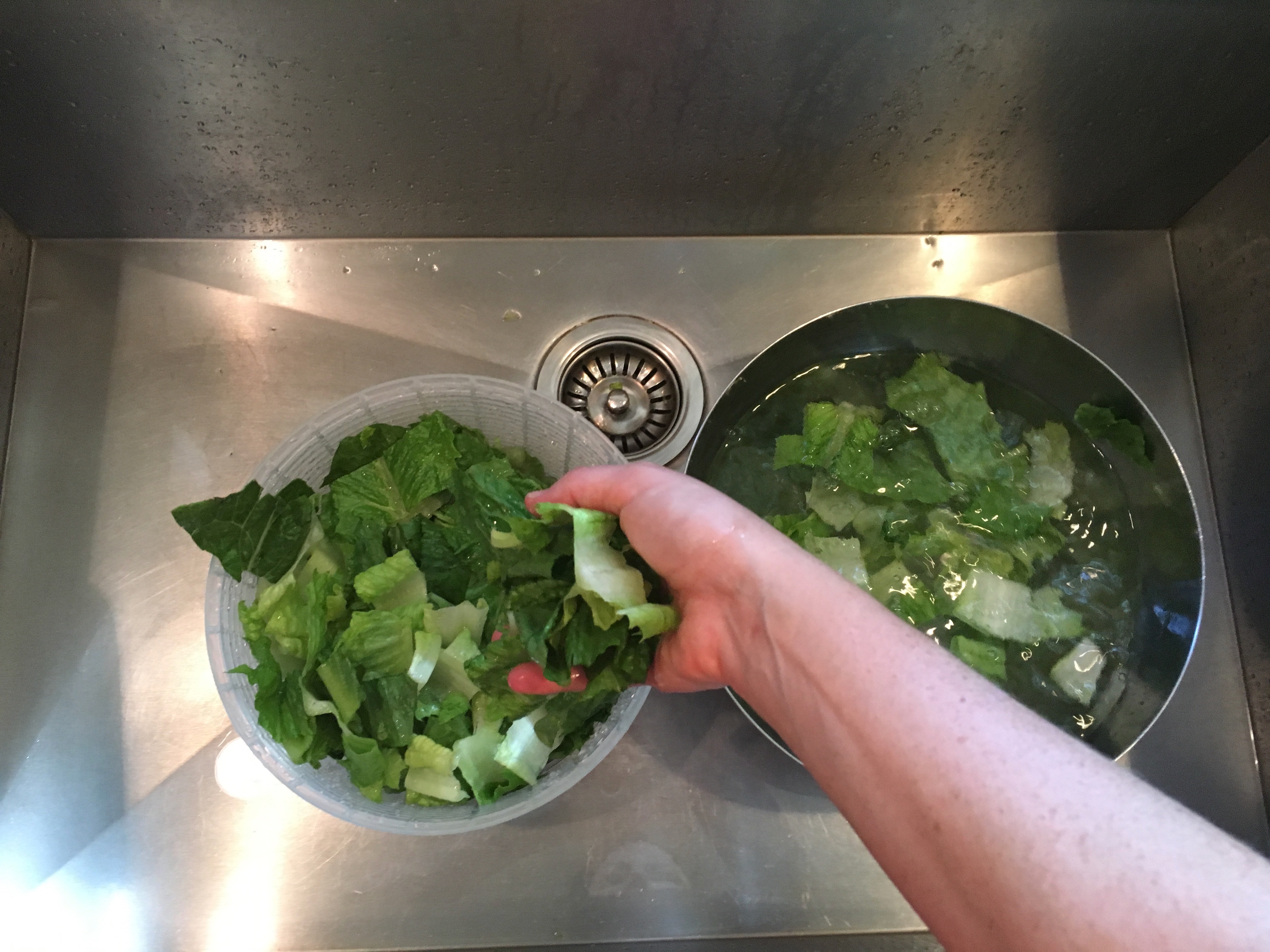
Lindsay Mattison
While I love being able to let the dishes pile up, my favorite part of the farmhouse sink is how much room there is. One of the most frustrating things about being a professional chef is coming home to a tiny little sink. I get used to a huge three-compartment sink at work. Those types of sinks have so much room to wash and rinse produce without worrying about making a mess in the kitchen.
Farmhouse sinks are wide and deep enough so I don't have to worry about water splashing around in the kitchen. I also love that I don't have to juggle my bowls from washed lettuce to the colander. I just set them both side-by-side and transfer them away in my single bowl farmhouse sink.
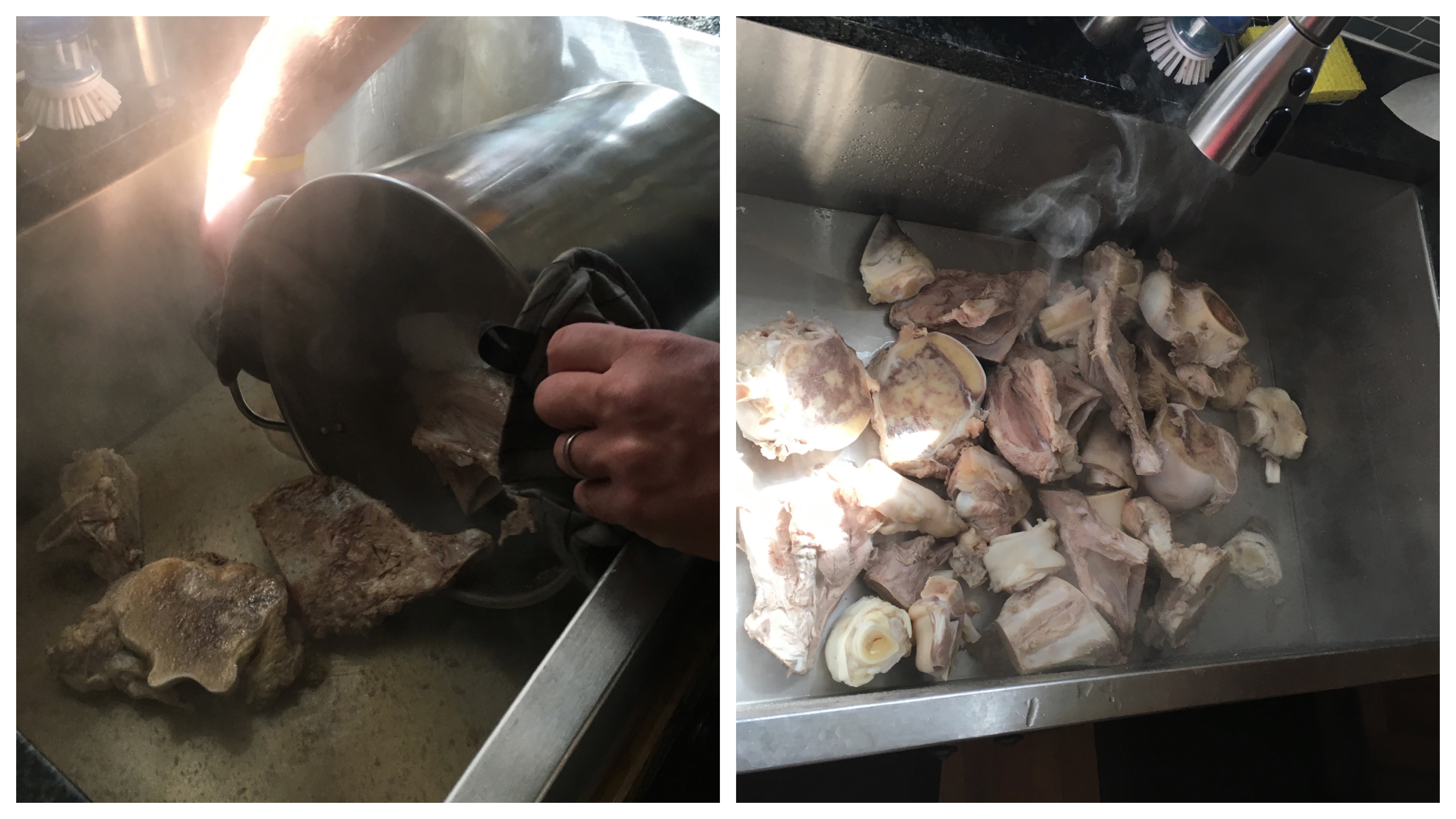
Lindsay Mattison
It's also nice to be able to drain a huge pot of blanched bones straight into the sink (after sanitizing it, of course). This means I don't have to wrestle with a small colander and drain in batches, all the while risking steam burns. And with an extendable kitchen faucet, I can rinse those blanched bones right in my single-bowl kitchen sink. No need to dirty any extra tools.
The Drawback of Farmhouse Sinks
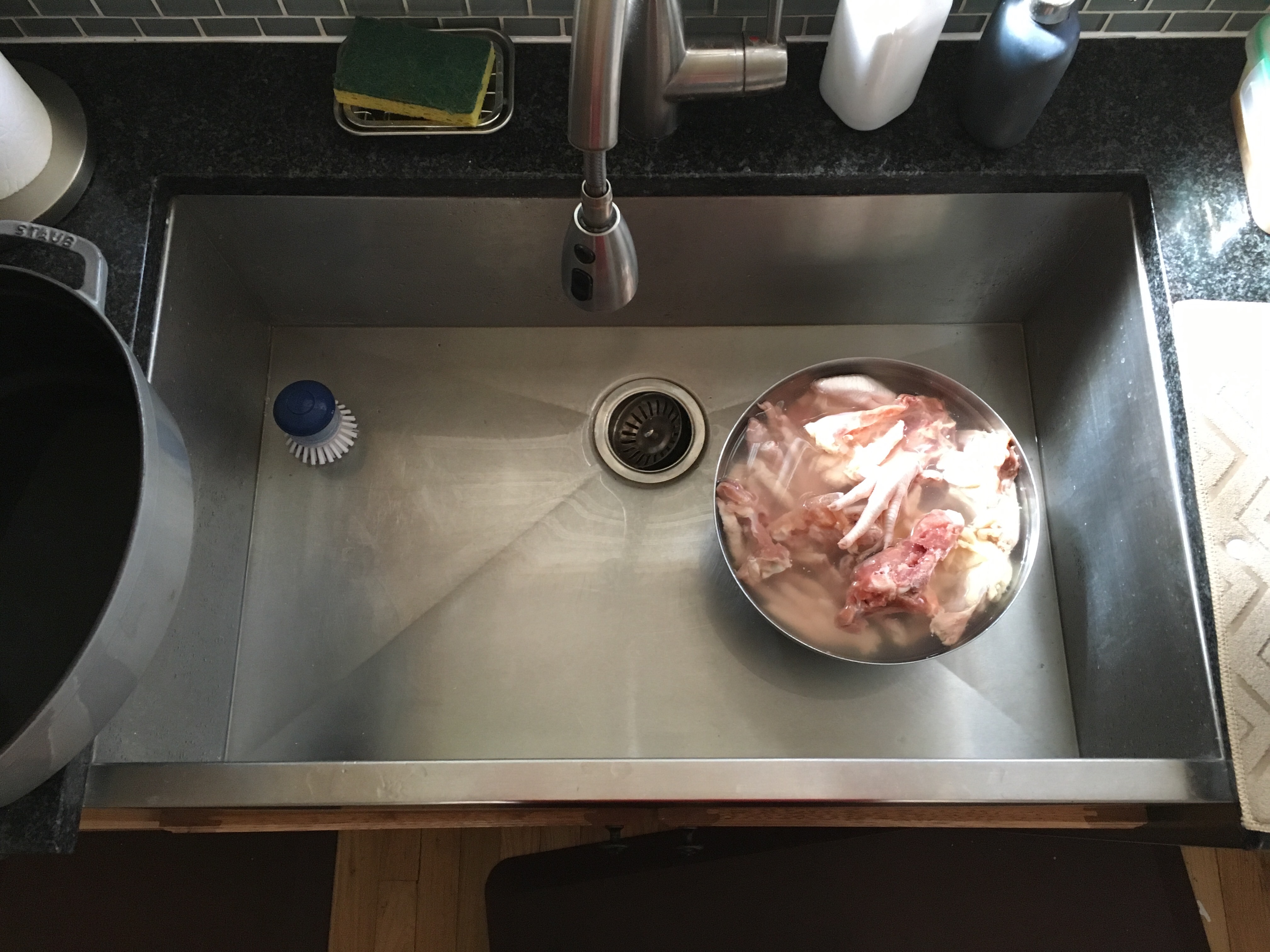
Lindsay Mattison
There are a ton of varieties available - stainless steel, copper sink, cast iron, stone, or white fireclay farmhouse sink - but they all have one major thing in common. They're larger than your old kitchen sink, which means you'll probably have to redo the surrounding countertops.
Why the redo? These apron front sinks are usually created in an undermount style, which means they are installed underneath the countertop. This creates a seamless transition between your counter and sink (and no space in between for pesky crumbs to fall). If you're not redoing your countertop, you'll probably have a hard time getting an apron kitchen sink installed.
Broken Dishes
While I am lucky and own a stainless steel farmhouse sink, the traditional model is porcelain which can chip, stain, and even break dishes. While you can protect against this with a sink protector and a little elbow grease with baking soda, porcelain farm sinks (although more aesthetically pleasing) are less practical than their stainless steel counterparts. Sure, you'll need to completely gut your counters to install either, but when it comes to maintenance, and the sanity of keeping Grandma's heirloom wine glasses safe, stick to a stainless steel model.
READ MORE: 10 Funny Kitchen Signs That Will Make Guests Do a Double-Take
This post was originally published on October 11, 2018.
